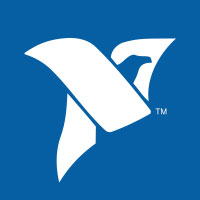  National Instruments (NI), the provider of solutions that enable engineers and scientists to solve the world’s greatest engineering challenges, on Thursday announced the world’s first software defined radio (SDR) for the millimeter wave (mmWave) spectrum. The new NI mmWave Transceiver System is a full transceiver that can transmit and/or receive wide-bandwidth signals at an unprecedented 2 GHz real-time bandwidth, covering the spectrum in the E-band, 71-76 GHz.
Engineers and scientists have used SDRs ubiquitously in the spectrum below 6 GHz for years. However, with companies investing in mmWave as a potential core technology for 5G, researchers now have a full-featured SDR platform to drive initiatives based on this technology.
“NI’s mmWave transceiver system has been a key research platform for our mmWave research. The platform delivers the right combination of hardware and software necessary to expedite our research and has given us confidence that mmWave will indeed be a critical technology for 5G. At this year’s Brooklyn 5G Summit, we are demonstrating a high data rate mmWave system using phased array @ 60 GHz using NI’s platform, thus making 5G a commercial reality,” said Tod Sizer, head of mobile radio research for Nokia Bell Labs.
“There’s no doubt that 5G will include frequencies above 6 GHz. The mmWave transceiver system is an essential platform for understanding the propagation models of higher frequency signals and for building real-world prototypes of these new generation 5G systems,” said Charles Schroeder, vice president of RF and wireless communications product marketing at NI.
The mmWave transceiver system includes new PXI Express modules that collectively function as an mmWave access point for a user device. Because of the unprecedented flexibility, users can develop mmWave communication prototyping systems or perform channel measurements –necessary exercises for wireless researchers to understand the characteristics of a new spectrum – using the same system.
The mmWave baseband software delivers a complete mmWave physical layer including channel coding in LabVIEW virtual instrument (VI) source code to expedite system development while alleviating many of the system integration tasks. Researchers can also use the mmWave transceiver system baseband with the E-band mmWave heads or other third-party RF front ends to offer maximum flexibility for exploring other mmWave and microwave frequency bands.
As a key participant in NI’s RF/Communications Lead User program, Nokia has been working with early versions of the mmWave transceiver system in its 5G research initiatives for over a year. |